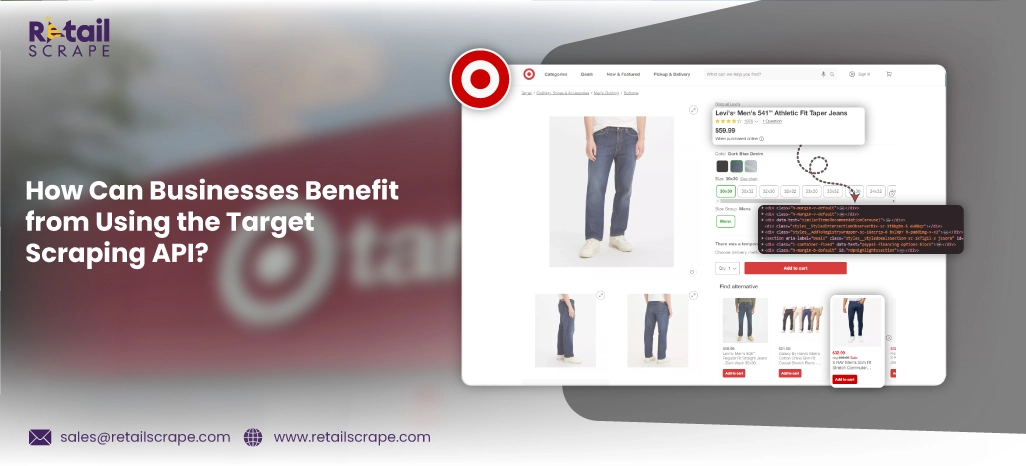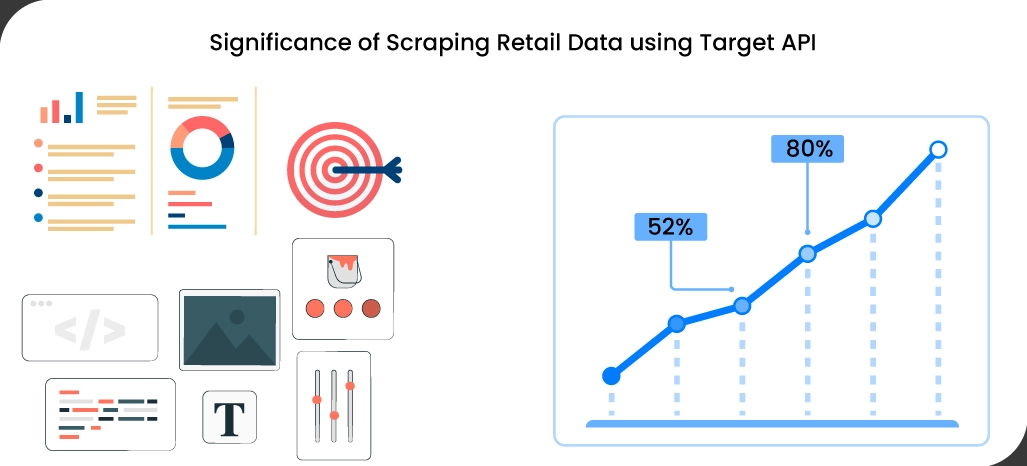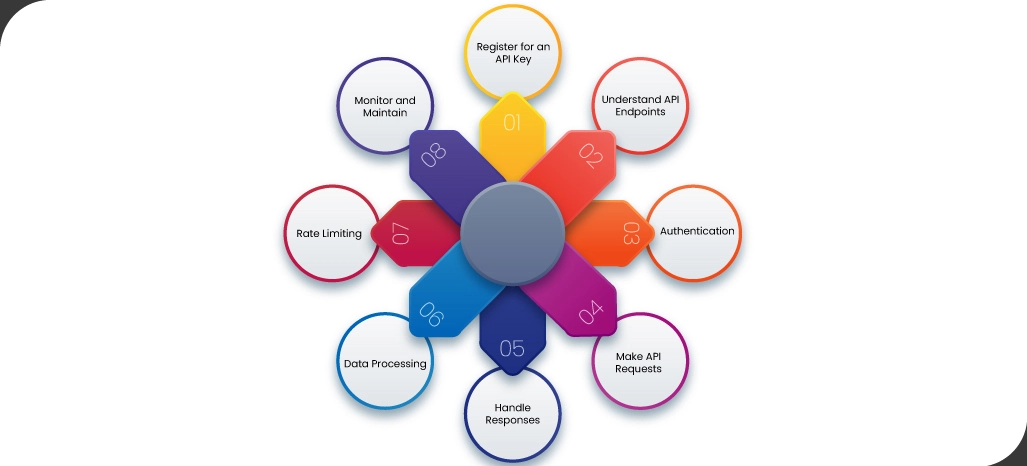
Retail data scraping involves extracting data from retail websites to gather product details, pricing, customer reviews, and competitor information. This data can be valuable for market research, price monitoring, competitor analysis, and pricing optimization.
Target, a major retail chain, provides an API (Application Programming Interface) that allows developers to access specific data from its website in a structured format. This Target product data scraping can retrieve product details, prices, availability, and store locations. Using the Target scraping API, developers can automate collecting and analyzing data from Target's website, saving time and effort.
However, it's important to note that retail data scraping services may raise legal and ethical concerns, as some websites have policies against scraping. It's essential to review and comply with the terms of service of the website being scraped and ensure that the scraping process is done respectfully and responsibly.
Significance of Scraping Retail Data using Target API

Scraping retail data using the Target API offers several significant advantages:
- Data Accuracy: Target data scraping provides accurate and up-to-date data, ensuring businesses have access to reliable information for decision-making.
- Efficiency: Using the Target API streamlines the data collection process, saving time and resources compared to manual scraping methods.
- Real-time Updates: Businesses can access real-time data on product availability, pricing, and promotions through the Target API, enabling them to make informed decisions quickly.
- Compliance: By using the Target data product data collection, businesses can ensure compliance with Target's terms of service and data usage policies, avoiding legal issues associated with unauthorized scraping.
- Competitive Advantage: Access to real-time and accurate data through the Target API can give businesses a competitive edge by enabling them to stay ahead of market trends and competitors.
- Integration: The Target API allows businesses to easily integrate the data into their existing systems or applications, making it easier to analyze and use the data effectively.
- Scalability: The Target API is designed to handle large volumes of data, making it suitable for businesses of all sizes.
- Customization: Businesses can customize the data they retrieve through the Target API to suit their needs, ensuring they get the most relevant information for their operations.
Scraping retail data using the Target API offers businesses a reliable and efficient way to access valuable information that can drive business growth and success.
Steps to Collect Data From The Target API

To scrape Target data, follow these steps:
- Register for an API Key: Sign up for a Target Developer account and obtain an API key required to access the Target API.
- Understand API Endpoints: Familiarize yourself with the various endpoints available in the Target API, such as product search, product details, and store locations.
- Authentication: Use your API key to authenticate your requests to the Target API. Include the API key in the request headers.
- Make API Requests: Use HTTP requests (GET, POST, PUT, DELETE) to retrieve data from the Target API. Specify the endpoint and any parameters required for the request.
- Handle Responses: Parse the JSON or XML responses from the API to extract the data you need. Handle errors and exceptions according to the API documentation.
- Data Processing: Process the data as needed for your application, such as storing it in a database or displaying it in a user interface.
- Rate Limiting: To avoid being blocked, adhere to the rate limits specified by the Target API. Monitor your usage and adjust your requests accordingly.
- Monitor and Maintain: Regularly monitor your API usage and performance. Keep abreast of any changes or updates to the API that may affect your application.
Following these steps, you can collect data from the Target API for your application or analysis.
Role of an Advanced Target Data Scraper to Collect Data
An advanced Target data scraper is crucial in efficiently collecting and analyzing data from Target's website. Here are the key roles they perform:
Data Collection: An advanced scraper can collect a large volume of data from Target's website, including product details, pricing information, customer reviews, and more. They can scrape data from multiple pages and categories, ensuring comprehensive coverage.
Data Quality: The scraper ensures the collected data is accurate, up-to-date, and formatted correctly. It handles various data formats, such as JSON, XML, or HTML, and cleans the data to remove inconsistencies or errors.
Dynamic Content Handling: Target's website may use dynamic content loading techniques, such as AJAX or JavaScript, which can pose challenges for scraping. An advanced scraper can handle such dynamic content to extract the required data accurately.
Frequency and Schedule: They can schedule and run scraping tasks regularly to ensure the data is always up-to-date. It is essential for monitoring prices, stock availability, and promotions.
Data Storage: An advanced scraper can store the scraped data in a structured format, such as a database or CSV file, making it easy to access and analyze. It can also efficiently handle large volumes of data.
Compliance: The scraper adheres to Target's terms of service and avoids overloading the website with excessive requests. They use techniques like rate limiting and user-agent rotation to mimic human behavior.
Error Handling: They handle errors that may occur during scraping, such as network issues or changes in website structure, ensuring that the scraping process is robust and reliable.
Data Analysis: In addition to scraping, an advanced scraper can perform basic data analysis tasks, such as identifying trends, patterns, and anomalies in the scraped data, providing valuable insights for businesses.
Overall, an advanced Target data scraping tool is critical in efficiently and effectively collecting and analyzing data from Target's website, providing businesses with valuable insights for decision-making.
Conclusion: The Target scraping API offers businesses a powerful tool for accessing and analyzing data from Target's website. It provides accurate and up-to-date information on products, pricing, availability, and promotions, enabling businesses to make informed decisions and stay competitive. By leveraging the API, businesses can streamline their data collection process, ensure compliance with Target's terms of service, and gain valuable insights into market trends and consumer behavior. Overall, the Target scraping API is a valuable asset for businesses looking to enhance their operations and drive growth in the competitive retail industry.
Transform your retail operations with Retail Scrape Company's data-driven solutions. Harness real-time data scraping to understand consumer behavior, fine-tune pricing strategies, and outpace competitors. Our services offer comprehensive pricing optimization and strategic decision support. Elevate your business today and unlock maximum profitability. Reach out to us now to revolutionize your retail operations!
